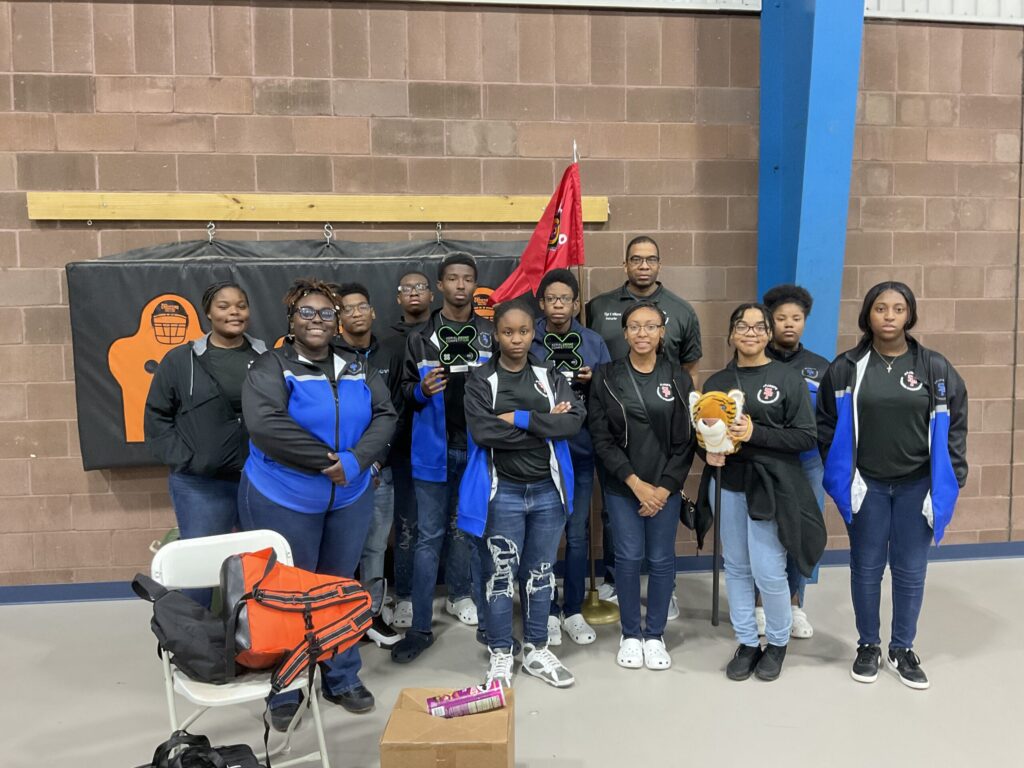Laurie Ross teaches English to 8th, 10th, and 12th grade students at Lost River Junior/Senior High School in the small town Merrill, Oregon, population 830. In addition to English, Laurie also serves as the high school robotics instructor at Lost River. This year, her team made it to the VEX Robotics World Championship for the first time, after securing a spot by coming in first at the Oregon State Robotics Championship. We sat down to talk about what inspires Laurie, and what it’s like to teach robotics in rural areas.
The first thing that comes to mind when one thinks of an English instructor is not necessarily robotics. How did you get into that aspect of your professional life?
When I was in high school in the mid 90s, computer labs had started to become more commonplace. My high school was tiny, but they were able to secure a grant that allowed the school to purchased networked computers. I thought they were amazing, and the lab inspired me to pursue a computer science minor when I got to college.
Unfortunately the computer science professors could not see how a woman who had declared English as her major would succeed in the digital world, so I was discouraged from pursuing the minor, and ultimately dropped it. It wasn’t until a few years into my tenure at Lost River that I convinced my principal to allow me to teach a computer design class. Then in 2012 we branched out to robotics.
You said you convinced your principal to bring this type of curriculum into your school. Was it difficult to get administration to see the value in teaching robotics?
Everyone saw value in it. The main issue was no one understood how the program worked or what our needs were. We were initially placed in a computer lab, which did not work for obvious reasons. We also did not have a field, so used tape to mark where the boundaries were. I think the game being played at the time was “Sack Attack” and the kids even sewed their own bean bags for it.
What is the area around Lost river like? Can you describe it?
We are extremely rural. Our school is literally in the middle of a potato field. In the 1970s there were two schools that they decided to consolidate, so a local farmer carved off a piece of land and donated it to the school district, and that’s where Lost River was built. The towns here are small, usually under 500 people, and most people are landowners or people who work that land. At the school the students are 60% hispanic and around 90% receive free or reduced cost lunches. Our poverty rate is pushing 90%.
That sounds like it could be hard at times. Given those economic difficulties, how do you fund your robotics program?
Our district is great! They fund pretty much everything we need to keep the program running. They provide bussing, a big order of parts and robots every spring, and things like that. In terms of travel to events, Oregon is a big place, so we travel a lot. There’s a little kiosk outside the grocery store here that you can exchange cans for money, and we make a couple thousand dollars a year collecting cans. Our infrastructure for the program is challenging, because we don’t have elective support. So all of our practice is done in a trailer that fits one field, but it does not have internet access. We also share it with several cats who have made their home there!
The school is working on getting a new building, so hopefully that will help. There’s just not enough space.
Given that you are in a rural area, robotics might be foreign to a lot of parents. Did you have trouble getting their buy-in?
Parents are actually very supportive! The problem is, many of them have to work all the time, so it is difficult for them to attend events. That said, whenever I really need something, they try hard to get it for me.
One of the biggest issues are the conflicts with more recognized competitive activities. Robotics season runs at the same time as basketball season, and as a small school, there aren’t enough students to do both. I will say, when we do have athletes on our teams, they tend to perform better. A few years back I rolled up to a competition with the entire Lost River football team, and that was really impressive. They were big guys, and they weren’t afraid to talk to other kids to make alliances. We did really well during that time.
That’s great. So, what is the most satisfying part about teaching robotics at Lost River?
Part of it is the new experiences that students get to have. Some have never flow or never go to restaurants. Those may seem like small things but they’re important to the kids. We’ve also qualified for events, and won Sportsmanship and Judges awards. I love those awards because it really showcases what good kids we have participating in the robotics program. When these students go to a tournament, they automatically ask “what can I do to help?” even if it is clean up at the end of the event, when they know they have an eight hour bus ride ahead of them.
It’s that type of contribution, knowing that we are helping instill these kind of values in these students, that makes REC Foundation programs great. Even if the kids stay in Merrill and never pursue a career in STEM, the soft skills that they learned doing robotics will serve them for a lifetime.
[/et_pb_text][/et_pb_column][/et_pb_row][/et_pb_section]




